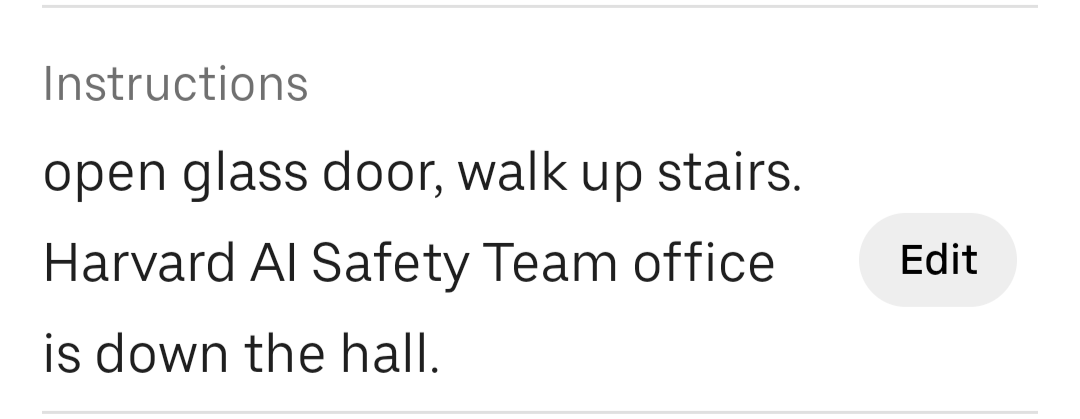This is a planning and execution checklist for socials that I quickly put together when delegating EA and AIS socials at Harvard. By social I mostly mean party/dinner party.
The process
Feel free to delegate parts of this to other people. It’s not that YOU have to do all of this, it’s that all of this has to get done, and it’s your job to make sure it does. Heroic responsibility.
Months in advance
- Look at the calendar and see if there are any dates during which you’d especially want to host socials.
- Themed / special occasion socials seem to attract many more (50% more or something) people. Something something scarcity.
- Some ideas for EA groups:
- Petrov Day
- Friendsgiving (ThanksGiving What We Can?)
- Borlaug Day
- Earth Day
One to two weeks in advance
- Plan social and find a space
- Add social to whatever calendar you use for social events
- Bonus tip: make a nice DALL-E image to go with it! I like prompts similar to "people sitting on couch and talking, watercolor"
A day in advance
- Get snacks and drinks
- Sample target order in appendix A
- Target’s delivery time of 1-2 hours is very unreliable. Order stuff at least 5 hours in advance to prevent the stuff being late. Instacart seems quite a bit faster.
- Publicize social to people over email/slack/facebook
- Make sure other people who should pub the social actually pub the social
- Think about who you want to be at the social and tell them about it so they can plan to be there
A few hours in advance
- Get food (schedule an order hours in advance, food places get angry/cancel orders if you make huge orders less than 2 hours in advance)
- Tell delivery people where to go in the delivery app. This often saves the both of you a phone call and confusion by answering the person’s questions in advance.

- DM people who you want to come
- “Hey, are you coming to [the thing] at [time]?”
- This is typically around 8-16 people
- If it would be exceptionally good if someone were present, tell them this
- Clean and set up venue
- Arrive an hour before the social at least to start setup. Surprising how much work it is.
- Take out the trash. Bins need to be mostly empty by the time the social starts
- Stock the toilet paper and hand soap in the toilet if running low
Right before social
- Start music 5 minutes before social
- Hook up phone to bluetooth speaker
- A good playlist for chill vibes is Spotify’s “My life is a movie”
- Prop open door with door stopper a few minutes before social
- Make sure drinks, snacks, food, are all easily accessible, venue is in order
- Try to simulate what a person coming to the social would think when they enter. Are the following things obvious:
- Where the food is?
- Where one can leave their backpack and/or jacket?
- The shoes on/off policy?
- Where the bathroom is?
- Where one can get water?
- What the wi-fi password is?
- Where paper napkins are?
- Which parts of the fridge (if any) are party stuff and which are personal stuff?
- Try to simulate what a person coming to the social would think when they enter. Are the following things obvious:
During social
- Greet people who enter
- Welcome them
- Introduce yourself
- Tell them where to go
- “We have snacks, drinks, and food in the kitchen, board games in the dining room, and video games in the living room.”
- If it’s their first time at the venue and you have time, give them a tour
- “The wifi password is ___. If you need anything talk to me or ____”
- Make sure people are comfortable during the social
- Clean up if messes occur. Trash is often left on the floor, spills happen, bins get full. Walk around every once in a while to check that everything is in order.
- Talk to the people you personally invited
- Do not do this out of a sense of obligation though, do this because you want to (simply only invite people that you’d want to actually talk to).
- It’s a bad vibe to personally invite someone to a party and then not talk to them during the party.
After social
- Turn off lights
- Lock door
- Clean up
- If you appreciated someone being at the social, send them a message, appreciation is nice :)
Appendix A: Sample Target order
(this order is for restocking things that are useful for socials. I think the quantities are off)



